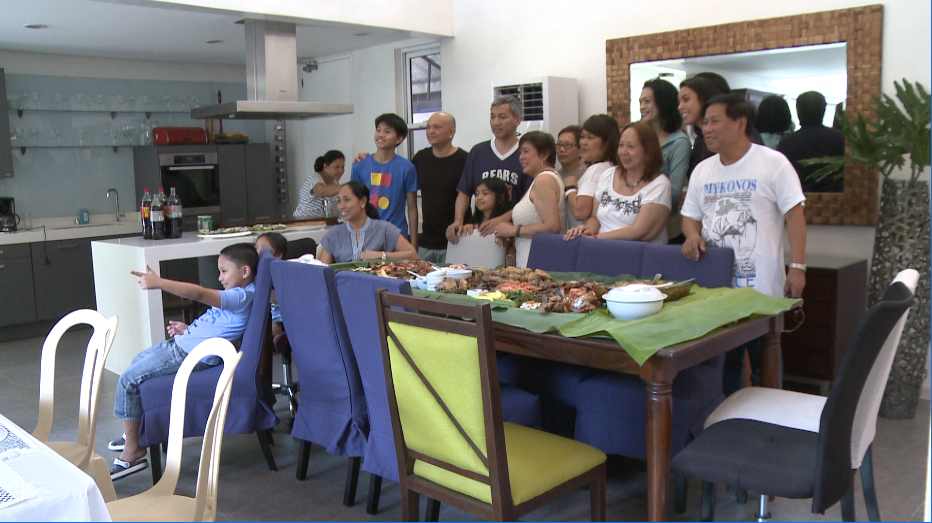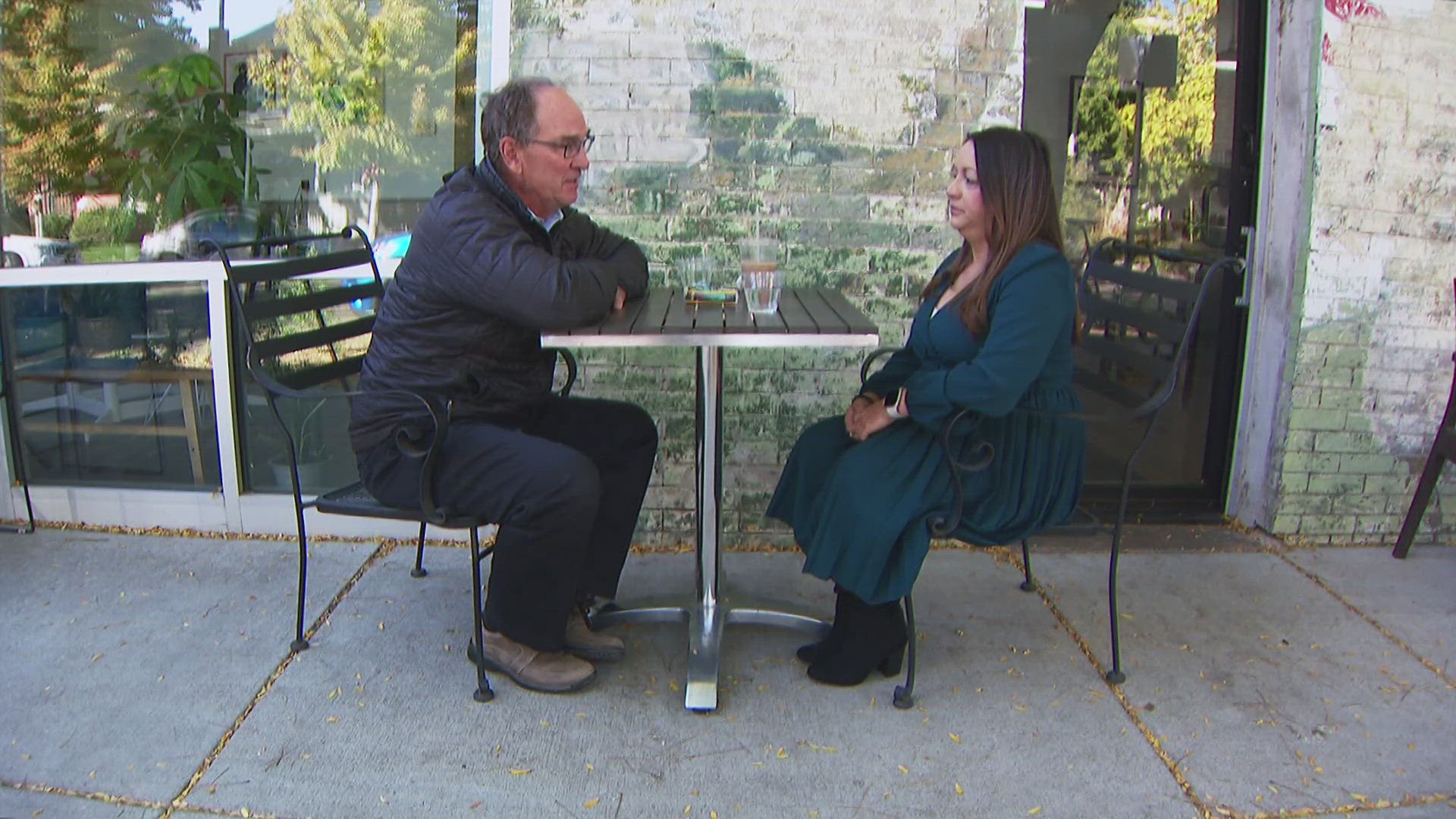9NEWS reporter Nelson Garcia travels to reconnect with his heritage. Here is a recount of his travels.
Lost Heritage: U.S., Philippine history intertwine
Before getting deeper into my own history. Let me share with you a little bit of history of the Philippines.
At the Manila-American cemetery where more than 17,000 American and Filipino solders are buried after making the ultimate sacrifice during World War II.
This cemetery is an example of how the U.S. and Philippines have been allies, some say brothers, for a very long time. Within the quiet, well-manicured grounds, you can find the names of Filipino soldiers side-by-side American ones. From 1898 to 1946, the Philippines was an American territory...
Veterans like Greg Canono joined World War II... not to fight for the Philippines, but to fight for America.
"I'm the first on the firing line," Canono said.
He lives in Aurora now and his memories of combat still remain strong -- even 70-plus years later.
"That evening, fighting again. We again engaged the Japanese," Canono said.
Decades before Frank Francone moved to Lakewood, he commanded American and Filipino soldiers.
When I was in the Philippines, I was a 19-year-old kid," Francone said. "I was assigned to the 12th Division of the Philippine Scouts."
"The United States depended greatly on the Philippine effort during World War II," Francone said.
The Philippines served as a foothold for the U.S. Military for this entire region.
"And, these Filipinos, though they were fighting some in country, they were also fighting like in New Guinea, Australia, all those other places," Mike Simbre, said.
From inside his Aurora home, Simbre is helping to get Filipino World War II veterans recognized by the U.S Government.
"They have been waiting 75 years and they're dying off daily," Simbre said.
Though many are buried here next to American soldiers... they were never officially honored for their sacrifice until Congress finally approved it in 2015.
"They were actually out there doing the fighting and they were defending our protection, our freedom here in this country," Francone said.
The Philippines is known for the Bataan Death March where the Japanese abused and killed American and Filipino soldiers as they walked halfway across the country.
Canono escaped the Death March.
"I see the cornfield higher than myself. I jump and just keep on running zig zag," Canono said.
The Philippines was lost for some time during World War II to the Japanese prompting General Douglas MacArthur's famous promise, "I shall return" a return made possible by Filipino soldiers fighting the occupiers using hit and run tactics.
"It was through the effort of those guerilla troops that they were able to get the intelligence," Francone said.
Eventually, the Philippines won its independence with help from the United States.
That's what the people buried here died for -- both American and Filipino. They fought for freedom together.
That's why when you drive around, almost all the signs are in English, almost all the people speak it.
The U.S. and the Philippines are two countries whose histories are tied together through sacrifice and blood.
Poverty in the Philippines
Traffic & Travel in the Philippines
Boarding the plane preparing for the long 15-hour flight is something unusual for me and new for my 15-year-old daughter Myria.
We are going to the Philippines because she has been invited to play for the U15 Philippines national soccer team. So, I decided to take this opportunity to reconnect with my past and my heritage.
I grew up as a first-generation American. My parents came over from the Philippines just a few years before I was born. But, growing up, I did not learn to speak the language of the Philippines and I never had a strong connection to traditions and customs of the native land of my parents.
The journey across the world takes us three planes, three countries, three airports.
I made this trip once before --going to the chain of 7,000 islands located south of Japan on the western edge of the Pacific Ocean. I was 8 years old with my mother.
I remember bits and pieces of that trip; meeting my great grandmother; being in a country in the midst of a rising revolution; and riding a carabao -- a water buffalo.
But, this time as an adult, I want to have a different experience... one that helps me appreciate the personality of the Philippines.
We are greeted by my Dad's Cousin Pablo Salangang. We call him Uncle Pabs.
"You have plenty of relatives here," Uncle Pabs, said.
The first thing you notice when arriving in Manila is the traffic and the driving.
"It's different," Myria said.
There seem to be no rules. Drivers change lanes by physically blocking the car in that lane. Motorcycles and scooters cut in and out of traffic like they don't want to live a long time. Uncle Pabs owns one of the largest driving schools in Metro Manila.
"You have to drive like a Filipino because you will not survive Manila if you drive like an American," Uncle Pabs said.
Metro Manila is home to 13-million people, all packed in, overcrowded. Most intersections don't even have any signs to control it. Drivers just go when they can.
For those who don't want to drive they can take one of the iconic Filipino traditions called the Jeepney. People jump in when they can and jump off when it's going slow enough. Not only are they a mode of travel... they are considered to be works of art.
"You try riding one huh? You experience all the Philippine way of traveling," Uncle Pabs said.
We are staying in a place called Bonafacio Global City. This is a more affluent area with high rise condos on every block.
"When you are inside, you don't feel like you are in the Philippines because of the buildings. You don't see the poor area," Uncle Pabs said.
We don't see what we will later learn is the heart and heartbreak of this nation of 100 million people.
Growing up as a Filipino-American
The reason why I am in the Philippines is actually thanks to my daughter Myria. We are both dual citizens and she has been invited to play for the U15 Philippine National Soccer team. While watching what's going on in the field, I find some perspective on the sidelines through other parents who understand my desire to find my lost heritage.
The path to my past is found along side a soccer field -- alongside the life of people like Reygie Cera.
"I grew up here, moved to the States when I was 16," Cera said.
Cera is here to support his daughter Viviana who was also invited to join the national soccer team. Cera lives in Nevada now. He is a proud U.S.Marine. But, before all this, he grew in a northern Philippine province called Pangasinan. Like many Filipino families, his was split apart by the need to make money overseas.
"My parents moved to Hawaii when I was 9 years old," Cera said.
He was left behind with his four siblings while his parents found work to support the family in the Philippines.
My mom and dad moved to the United States after college to financially support their families back home, too, because that's the Filipino way.
"That's what we do here. We sacrifice," Cera said.
As I was growing up, my parents didn't teach me to speak Tagalog, the main language of the Philippines.
We focused on fitting in with everyone else in the northwest suburbs of Chicago.
"It's a way of Filipino parents from here, from the Philippines to show that they have to live the American way," Cera said.
Looking back now, I feel disconnected from my heritage stuck somewhere between being fully Filipino and fully American.
"I was born in the Philippines and I went to America when I was 11," Margette Hill said.
Hill is also on the sidelines watching her daughter Malina. She says no one is really to blame for the way our parents chose to raise us.
"Maybe because they feel like, you know, you're in America, this is your home. You're born in America, you're raised in America. You're an American," Hill said.
Her mother raised her in California with her new husband whom Hill considers to be her real father, but something was missing.
"I wanted to learn all the tradition and the culture so I can pass it down to my kids. So, it doesn't just stop with me," Hill said. "So, I educated myself. I came to the Philippines after I got married. I wanted to experience and also I looked for my biological dad."
Hill says he left her and her mom when she was 5-years-old. She wanted to reconnect with something real, not just heritage.
'I felt incomplete. I wanted to know where I came from," Hill said.
When she found him, Hill says her perspective on life changed.
"Yes, I'm a lot happier, a lot happier that I met my biological father. It was very difficult before, but I do, I feel complete," Hill said.
Hill and her family moved to the Philippines from California last year.
Her daughter Malina is going to high school here so she can learn what it means to be Filipino..
"That's why it's so important to get my kids to know my culture and that's why I brought my daughter here to go to school to learn the language," Hill said.
So, Hill and Cera both understand why my trip to the Philippines is more than just to sit along side of a soccer field.
"I appreciate it. I know how to live the hard life. A lot of people in the States don't really know how hard it it is to live overseas," Cera said.
Hill says learning one's history is important.
"I was born here and I was raised here till I was 11. So, there was a lot of things that I carried with me and I took with me when I migrated whereas you for example. You were born. You were raised. You don't know anything," Hill said. "So, I don't feel like you've lost or you're missing something. But, I do feel that maybe it doesn't hurt or be curious about it and research it because you are Filipino."
Traveling to find lost heritage


